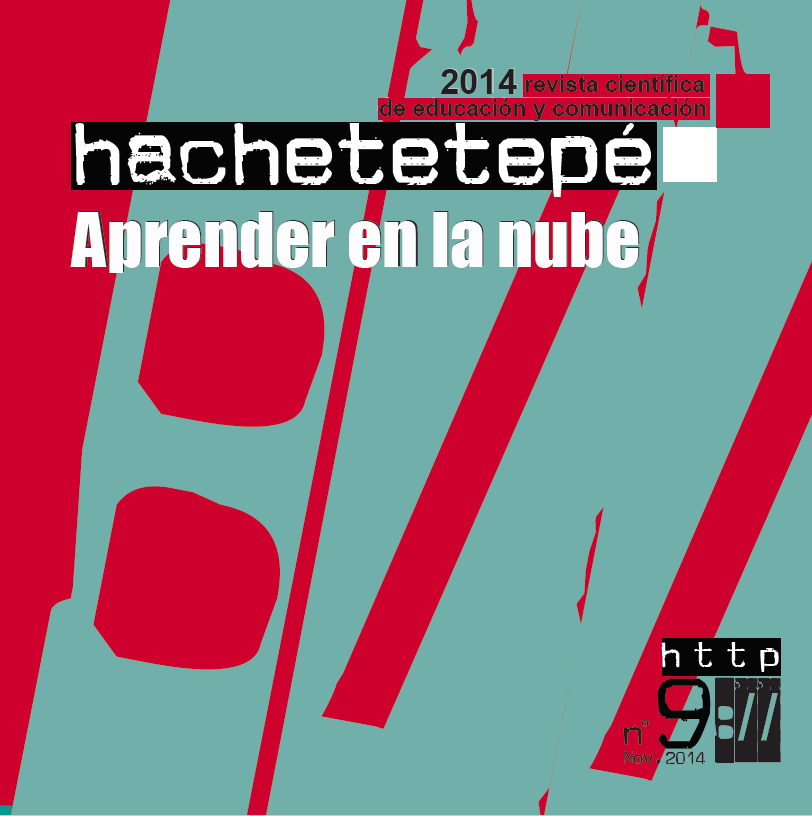Integration tools “cloud” in the process of learning

Info
Abstract
This article addresses the question, How to integrate ICT tools available in the cloud in the teaching-learning process? The concept refers Cloud to an "infinite" data set available for hundreds of thousands of users Users who download and run programs and software applications distributed along worldwide (Google Maps, Gmail, Facebook, Tuenti o Flickr) To try to answer this question begins by exploring the concept of integration in order to define and deliver some data around the concepts of technology, ICT and cloud computing. The article takes the point of view of technological studies in the U.S. during the late 60s and perspectival philosophical view of Ortega and Gassete 1914 Generation, marked by the innovations of modern thought.
Keywords
Downloads
How to Cite
License

This work is licensed under a Creative Commons Attribution-NonCommercial-NoDerivatives 4.0 International License.
Those authors who have published with this journal, accept the following terms:
- They will retain their copyright and guarantee the journal the right to first publication of their work, which will simultaneously be subject to the Creative Commons Attribution License . They may be copied, used, disseminated, transmitted and publicly displayed, provided that the authorship, url, and magazine are cited, and are not used for commercial purposes. No derivative works are allowed.
- They may adopt other non-exclusive license agreements for the distribution of the published version of the work (e.g., deposit it in an institutional telematic archive or publish it in a monographic volume) provided that the initial publication in this journal is indicated.
- Disseminate your work through the Internet (e.g., in institutional telematic archives or on your website) once the manuscript is accepted, which may lead to interesting exchanges and increased citations of the published work. (See The effect of open access).
Hachetetepé. Scientific journal of education and communication does not charge a fee for the submission of manuscripts or for the publication of its articles.
References
Aguilar, L. (2011). Computación en la Nube e innovaciones tecnológicas. El nuevo paradigma de la Sociedad del Conocimiento. Paraguay: Universidad Pontificia de Salamanca.
Brunner J. J. y Tedesco J. C. (2003). Las nuevas tecnologías y el futuro de la educación. Buenos Aires: Alsina.
CEPAL (2013). Economía digital para el Cambio Estructural y la Igualdad. Santiago de Chile.
Cloud Security Alliance (2010). Top Threats to Cloud Computing. (Recuperado en enero de 2014 de https://cloudsecurityalliance.org/topthreats/csathreats.v1.0.pdf).
De Kerckhove, D. (1999). La Piel de la Cultura. Barcelona: Gedisa.
Fundación de la Innovación Bankinter (2009). Innovación Social, Reinventando el desarrollo sostenible. España.
Gartner (2010). Gartner’s Top Predictions for IT Organizations and Users, 2011 and Beyond: IT’s Growing Transparency. Stamford, Estados Unidos.
Hopenhayn, M. (2005). Amércica Latina, desigual y descentrada. Buenos Aires: Grupo Editorial Norma.
Huth, A. y Cebula, J. (2011). The Basics of Cloud Computing. EEUU: Carnegie Mellon University.
INTECO-CERT (2011). Riesgos y Amenazas en Cloud Computing. Madrid: Ministerio de Industria, Turismo y Comercio.
Management Solutions (2012). La nube: oportunidades y retos para los integrantes de la cadena de valor. Madrid: Management Solutions.
Maples, J., Groenke, S. y Dunlap, D. (2005). The Web Pen Pals Project: Students’ Perceptions of a Learning Community in an Online Synchronous Environment. Journal of Interactive Online Learning.
Ortega y Gasset, J. (1951). Obras Completas, Tomo V. Madrid, España: Revista de Occidente.
PNUD (2011). Indicadores Económicos sobre Desarrollo Humano de las Naciones Unidas. (Recuperado el 24 de abril de 2011 de http://hdrstats.undp.org/es/paises/perfiles/CHL.html).
Ponce, J. (2009). Determinismo tecnológico y utopismo en los discursos sobre la Red. (Recuperado el 1 de febrero de 2011 de: http://www.rizomatica.net/determinismo-tecnologico-y-utopismo-en-los-discursos-sobre-la-red).
Puentes, E. (2001). Fatalismo y tecnología: ¿es autónomo el desarrollo tecnológico?. UOC. (Recuperado el 14 de mayo de 2011 de: http://www.uoc.edu/web/esp/art/uoc/0107026/aibar.html).
Symantec Corporation (2013). Internet Security THREAT REPORT 2013. (Consultado en enero 2014 de http://www.symantec.com/security_response/publications/threatreport.jsp).
We are social (2014). Global Digital Statistics 2014. We Are Social’s Snapshot Of Key Digital Indicators. Londres.

